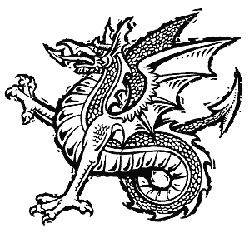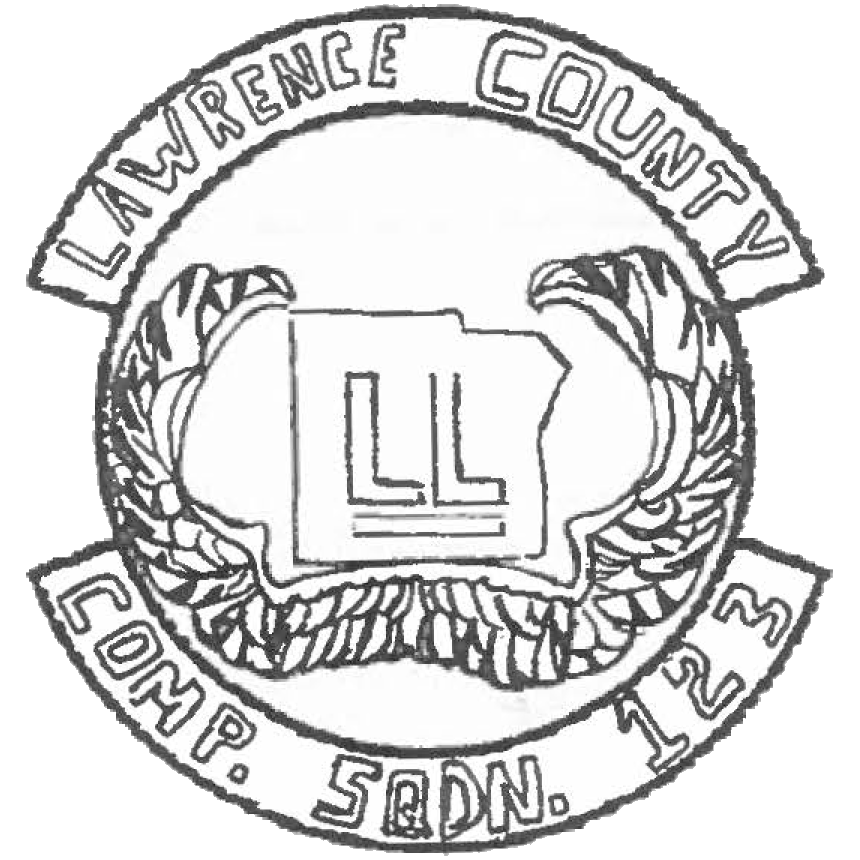


The Keystone represents the State of Pennsylvania, and Erie is in the northwest corner of the State, as shown by the location of the origin of the sunburst. The motto describes the arrows - We will travel to the four corners of the Wing to "Support by Leadership". The "DII" are the Roman Numerals of the Squadron designation "502" - the squadron being a part of Group 50 at the time.
The emblem was designed by William "Bill" Shafer, and the patch came into use in 1973. When it came time for a second order for more patches, the squadron decided to include a small, "silver star" in the field in random places for each Spaatz cadet they had. There are now at least four silver stars included in the last variation of the patch.
Information provided by:
Lt Col William "Bill" A Shafer
October 19, 2007


The Squadron 209 patch was designed in 1999 by Shawn Stanford, and contains two main elements...
Information provided by:
Capt Shawn Stanford
November 05, 2002

 1. Bald Eagle: Represents a commitment to honor our nation's heritage as well as the men and women who have fought and sacrificed their lives to defend and secure our past and current freedom. The forward reaching talons represent our vigilance in preparing ourselves for service while advancing the corporate missions of the Civil Air Patrol.
1. Bald Eagle: Represents a commitment to honor our nation's heritage as well as the men and women who have fought and sacrificed their lives to defend and secure our past and current freedom. The forward reaching talons represent our vigilance in preparing ourselves for service while advancing the corporate missions of the Civil Air Patrol.
2. 504 with CAP Propeller Logo: Represents a recognition of and respect for the historical roots of Civil Air Patrol and its centrality to our continued relevance as a squadron.
3. Orange Keystone: The keystone represents a commitment to our home state of Pennsylvania. The orange color represents the Ranger search & rescue training heritage of the Pennsylvania Wing of the Civil Air Patrol.
4. Three Stars: The three stars represent the CAP's three primary missions of Aerospace Education, Cadet Programs, and Emergency Services. The shape of a star is used to symbolize that each of these missions serves to guide and direct our ultimate course. They also serve as a light and visible representation of the critical roles performed by the CAP in the further advancement of our nation and our nation's youth.
a. The Silver Star represents Aerospace Education because of the historical and near universal use of aluminum in the aerospace and aviation industry.
b. The Gold Star represents Cadet Programs because of the "refining" work that it produces in the life of every cadet who pursues the core program elements.
c. The Green Star represents Emergency Services because of our inland commitment to life saving ground and air operations.
6. Blue Globe: Represents the global reach of the Civil Air Patrol through the growing influence of Communications and Cyber technologies.


Description: Upon a blue disc with rockers, these reading "LAWRENCE COUNTY" in red text on the top one, with "COMP. SQDN. 123" in red text at the bottom one, 2-3/4 inches wide by 2-7/8 inches high, with gold letters LL inside the red shape of Lawrence County, surrounded by white stylized wings, all of this surrounded by a gold border.
Symbolism: The shape of Lawrence County refers to Squadron 123's location and heritage, while the gold, underlined double-L, "All's Well" symbol, refers to the squadron's emergency services capabilities. The stylized wings suggest flight and represent the squadron's aviation capabilities. The colors red, white, and blue represent the colors of the United States and the U.S. Civil Air Patrol, while the color gold represents the excellence required of all our personnel.
The emblem was designed by Cadet Spenser Rapone.